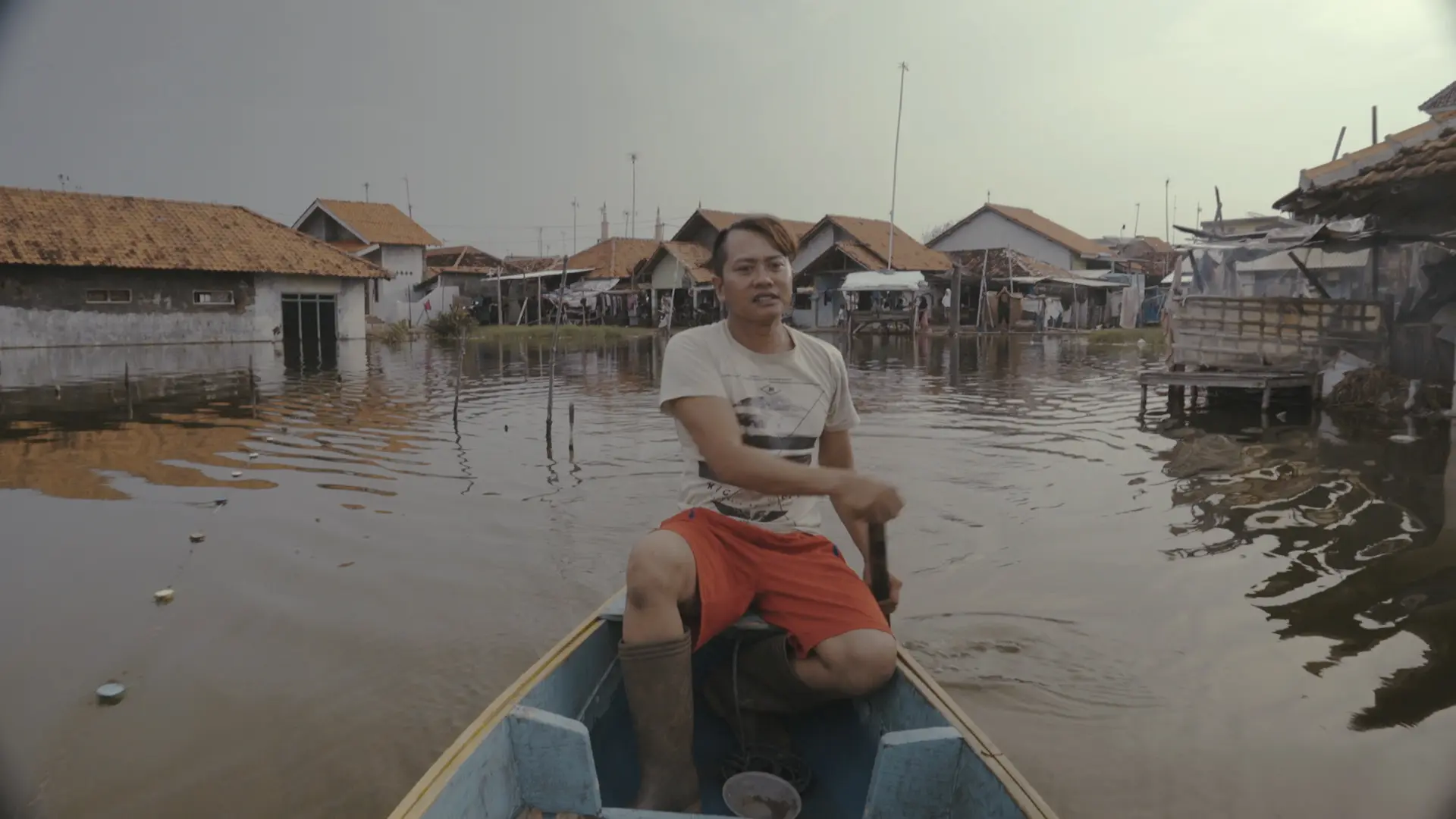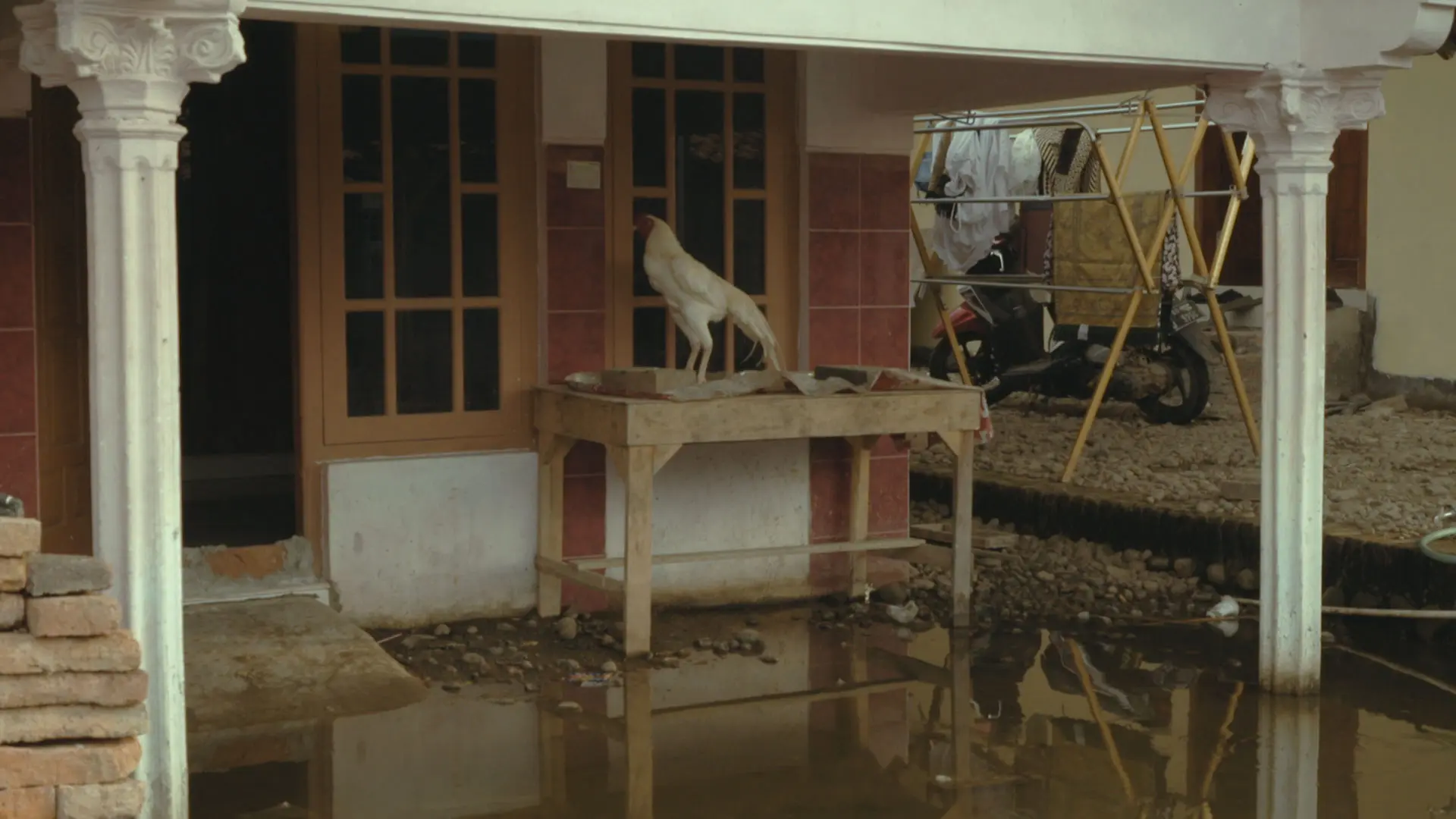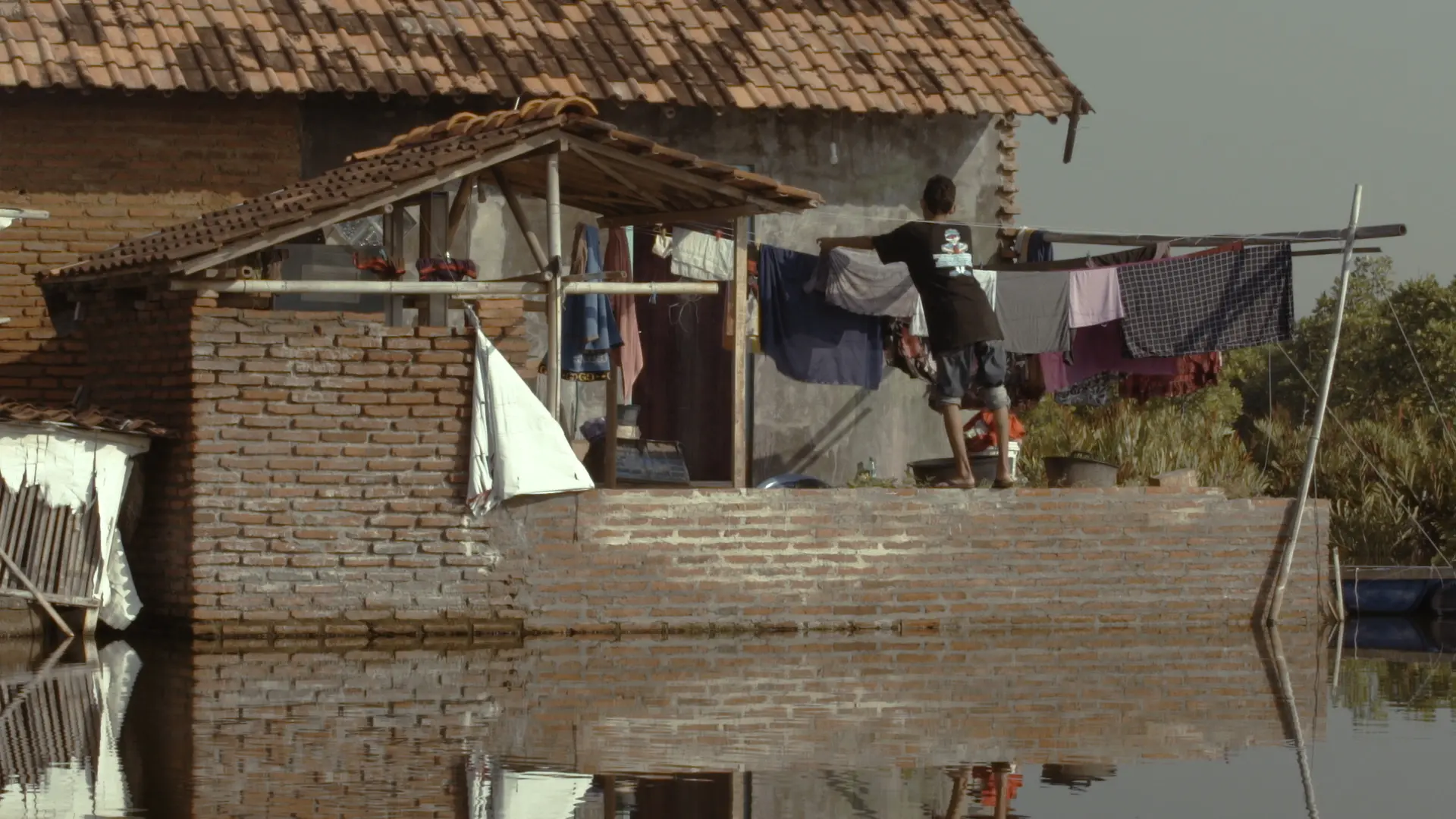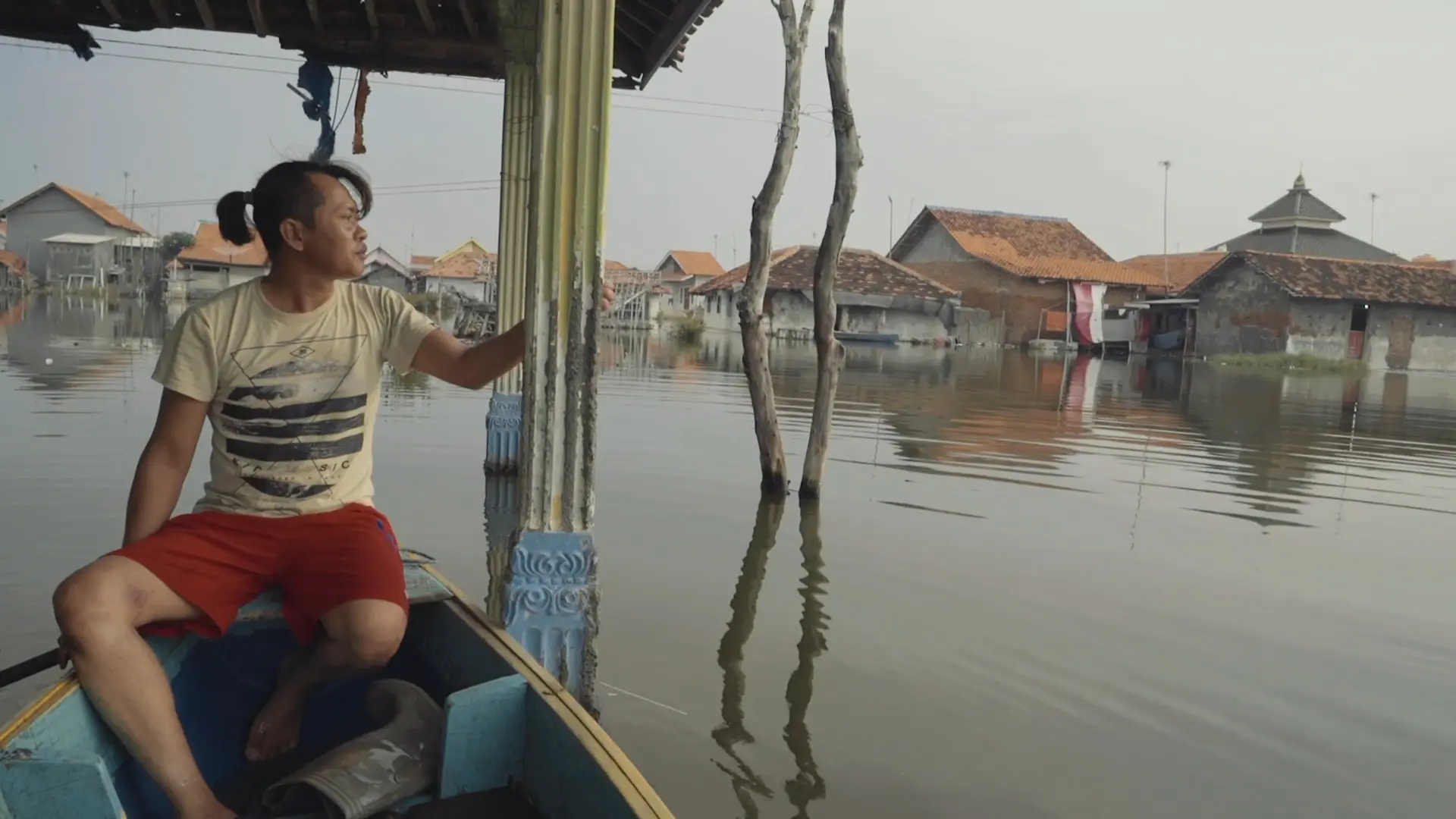Dulhaji Dolena (2020): The Eccentric Portrait of Dul – Keeping On in a Sea of Endless Tidal Floods
- Majesti Anisa
A home is meant to be a safe haven a place of shelter and stability that plays a crucial role in everyday life. Yet its function can be deeply compromised by the surrounding environment. One of the gravest challenges is flooding: it not only damages property but disrupts daily routines, limits mobility, isolates access, and halts education, income, and other essential activities. This disruption creates an ongoing instability for affected communities. Dulhaji Dolena, a documentary by Anita Reza Zein, captures this reality through a cinéma vérité approach, where the filmmaker is actively present, documenting the life of Dulhaji as he navigates a village perpetually submerged by tidal flooding.
Dulhaji lives in Api-Api Village, a coastal area in Pekalongan that has been plagued by tidal floods since 2008 due to land subsidence and poor water management. In the film, he recalls the days when his neighborhood was lively with schools full of children, playgrounds, and a thriving community. Now, what remains is endless water, creeping water that haunts the village. Dulhaji, a traveling fruit vendor, chooses to stay despite it all. His home, once standing 1.5 meters above the ground, now has steps nearly level with the floodwaters. When it rains, the water doesn’t just fill the yard it seeps into the living room, the bedroom, and the kitchen. Dulhaji and his family have no choice but to evacuate sometimes to his in-laws’ house, or even to the goat pen he owns.
Dulhaji’s lifestyle embodies a bittersweet irony. On one hand, he struggles to meet daily needs by pushing his fruit cart through waterlogged streets. On the other, he radiates joy. He sings, writes songs, plays guitar, and even creates silly comedy videos. Known by locals as a “junkyard artist,” he wears donated second-hand clothes with pride garments originally meant for flood victims. Dulhaji makes full use of whatever others leave behind. Amid his hardships, he still finds ways to be happy.
But behind the laughter and his cheerful tunes lies a quiet unrest. In his original song Banjir (The Flood), the lyrics are simple, yet deeply moving: “How long will this last? When will this stop?” Dulhaji often experiences stress, especially when exhaustion overtakes him. Yet he doesn’t allow himself to be consumed by sadness. He keeps moving, keeps working, keeps engaging with those around him. His job is more than a means to earn money, it’s a way to stay sane, to stay connected. Chatting with customers, joking with neighborhood mothers, entertaining children these moments breathe life into him.
In the face of relentless tidal floods, Dulhaji’s daily actions are a quiet form of resistance. He refuses to surrender to his circumstances. Beyond economic survival, he continues to raise his voice. From the beginning, Dulhaji has persistently called on the government to address his village’s condition. He understands that this disaster isn’t purely natural. It is also the result of poor urban planning and groundwater exploitation. Though most responses come in the form of empty promises or minimal aid, Dulhaji never stops speaking out.
Dulhaji may be just one among thousands affected by tidal floods on Java’s northern coast, but his story reminds us that behind every disaster, there are human beings fighting not only against the disaster itself, but against loneliness, resignation, and systems that neglect them. By choosing to stay, to work, and to create in the midst of adversity, Dulhaji shows us that even in the darkest corners, people can still find light.
Catch Dulhaji’s hilarious antics and heartfelt moments in Dulhaji Dolena, screening as part of Layar Tandang: Semarang Sewon Screening 11!
By Majesti Anisa
Editor Satya Din Muhammad
Translator Debytha Nela Mv.






Comments • 0
Write your comment
Comments • 0